Featured

How to Pick the Best Roofing CRM (Without Being Sold To)
Roofr and ABC Supply Launch Integrated Measurement Reports Inside myABCsupply
Using Roofr for Christmas Lights Measurements and Quotes
How to Pick the Best Roofing CRM (Without Being Sold To)
Choosing the best roofing CRM for your business is tough. That’s why roofers turn to peer reviews on G2.
Metal Roofing Explained: R-Panel vs. AG-Panel vs. U-Panel
Let's talk metal roofing! What the panels are. What sets ‘em apart. Plus install tips, common mistakes, and when to recommend a metal roof.
Roofr and ABC Supply Launch Integrated Measurement Reports Inside myABCsupply
Users can now order Roofr Measurement Reports right from myABCsupply.
Using Roofr for Christmas Lights Measurements and Quotes
Hanging Christmas lights for homeowners this year? Learn how to measure, prep, and quote light hanging the modern way: from your warm home.
The Roofer’s Guide to the Best Asphalt Shingles: 3-Tab vs Architectural
Wanna make sure your roofing business is offering the right types of asphalt shingles for the right jobs? Look no further.
Modified Bitumen Roofing: Why Use Mod Bit for Flat Roofs?
What's the deal with mod bit? Learn the pros, cons, how-tos, and how-not-tos of modified bitumen roofing.
What Every Roofer Should Know About Tile Shingles: A Complete Guide
Learn all about roofing tiles: material types, pros and cons, install tips, and what to watch for on the job. It's tile time.
How to Grow a Roofing Business: 8 Resources to Get You Started [2025]
Wondering how to grow a roofing business? Lean on these 8 free roofing business resources to get your business off the ground and into the stratosphere.
Free Roofing Invoice Templates (with Real Examples)
Step right up for your free roofing invoice template! Get the low-down on what to include in a great roofing invoice, and how to take yours to the next level.
How to Order Roofing Supplies More Efficiently
Ready to order roofing supplies more efficiently? Here's how a CRM like Roofr can take your material ordering process to the moon.
How to Bid a Roofing Job: The 7-Step Guide for Contractors
From roof measurements and material costs to labor, overhead, and markup, learn how to bid roofing jobs properly, step by step.
The Roofing Sales Process: How to Make $100k
Wanna know how to sell roofs like the pros do? From the right presentation to in-home flow, these roofing sales tips will help you hit that first $100K.
Measuring Complicated Roofs: the Manual Way & the Modern Way
What's the best way to measure those really big, complicated roofs? In this guide, we compare the old-school way with the modern approach.
4 Steps to Turn Summer Leads into Year-Round Customers
Summer's the time to install roofs, sure. But it's also the right time to plant the seeds for future business with referrals, reviews, and check-ins.
Is Roofing Hard? The Pros & Cons of Being a Roofer
Is roofing hard? Is roofing a good career? If you're thinking of getting on a roof, read our insider take on the pros, cons, and reality of being a modern-day roofer.
How Profitable is the Average Roofing Business?
How profitable is owning a roofing business? How much do roofers make in 2025? We did the research so you don't have to.
10 Important Roofing Business Terms for New Owners to Know
Starting a business, but struggling to understand POS, P&Ls, or AP? Hey, not all of us went to business school. Let us guide you through these must-know roofing business terms for new owners.
The 2025 Roofing Lead Generation Playbook: How to Get More Roofing Leads
Lead gen always on your mind? Never wonder where your next lead is coming from with this playbook to make lead gen easy for roofers.
What is a Roofing Square in Measurements?
A common question asked by many new to roofing involves roofing squares – namely, “What is a roofing square in measurements?”
How to Calculate Roof Waste Factor
Learn how to calculate waste factor and what waste percentages are used in roofing. Plus, get our free waste factor calculator and worksheet!
The Roofer’s Guide to a Kickass Google Business Profile
What do potential customers see when they search for your business? Your Google Business Profile should be set up to wow 'em and win you work. Here's how.
Text Message Marketing for Roofers: A Guide
Want to book more jobs and get paid quicker? See how smart texting helps roofers win deals, keep customers happy, and stand out from the competition.
How to Nail Your Roofing Sales Pitch (and Close More Jobs)
Use these door to door roofing sales pitch examples to up your game, leave a lasting impression, and win more work.
Custom Domain Emails: Why Roofers Should Make the Upgrade
Do you really need a fancy custom email for your growing roofing business? Well, yeah, you absolutely do. Here's why.
Roofing Ad Examples & Ideas to 10x Your Sales
Looking to bring in more leads for your roofing business? Use these marketing strategies and roofing ad examples to skyrocket your reach and win more customers.
Residential VS Commercial Roofing: What You Need to Know
No, not all roofs are the same! There are some important differences between commercial and residential roofs. If you're getting into commercial roofing, start by learning what sets it apart.
Roofing Shingles Compared: GAF vs. BP vs. CertainTeed vs. Owens Corning
An asphalt shingle guide for roofing businesses deciding which to use. Compare GAF Timberline HDZ against CertainTeed Landmark, BP Mystique, and Owens Corning Duration.
The Roofer’s Glossary: Roofing Terms and Definitions Explained
Want to understand a certain roofing term or new bit of lingo? Look no further! Use our list of popular roofing definitions to stay up to date.
Roofing Safety Gear and Equipment: The Business Owner’s Essential Guide
Arm your workers with the right tools. Don’t rely on bad roofing equipment just to save a buck!
Roofr and SRS Distribution Partner to Streamline Material Ordering with Real-Time Pricing Integration
Roofr, the all-in-one roofing software platform, has officially launched its integration with SRS Distribution, one of the fastest-growing building products distributors in the United States.
Managing Roofing Crews in Hot Weather: Summer Safety Tips
Prevent heat stroke, stay hydrated, and keep your crews healthy all summer with these tips.
From Spreadsheets to Speed: Why Roofing Businesses Are Adopting CRMs in 2025
Still using a spreadsheet to run your roofing business? Here's the proof you need that they're keeping your business from thriving.
500+ Jobs a Year: How Simple Roofing Websites Are Driving Big Results
Fancy websites doesn't always mean lots of leads. Simple sells. Learn how to build a website that converts.
Roofr and QXO Partner to Bring Real-Time Pricing and Digital Material Ordering to Roofing Contractors
Roofr, the all-in-one business management platform for roofing professionals, is thrilled to announce its integration with QXO, the largest publicly traded distributor of commercial and residential roofing products in North America.
Roofr Appoints Ryan O'Nell as Chief Revenue Officer to Accelerate Growth and Innovation
Roofr announces the appointment of Ryan O'Nell as Chief Revenue Officer (CRO). O'Nell brings over two decades of experience in scaling high-growth SaaS companies, including his tenure at companies like GitLab, New Relic, SurveyMonkey, and Salesforce.
Walk the Talk for Workplace Mental Wellness: Roofr Named One of the Best Workplaces for Mental Wellness
The Roofr team has spoken. And 100% of employees survey's agree that this is a great place to work.
Win More Referrals from Realtors With Roofr’s Instant Estimator
Capture warm leads and build relationships with little extra effort by pairing Roofr's Instant Estimator with Realtors in your area. Learn how.
The State of Roofing in 2025: Why Tech-Savvy Roofers Are Pulling Ahead
Key highlights from the 2025 Roofing By The Numbers industry report. Learn the key takeaways and download the report today.
A No-Nonsense Guide to Evaluating Software
Leverage G2’s quarterly reports for trusted software reviews, comparing tools based on real user experiences to find the best fit for your business.
Roofr Recognized as a G2 Spring 2025 Leader
Roofr is ranked #1 in Small Business Roofing and #2 overall in the G2 Spring 2025 report, praised for ease of use, seamless setup, and exceptional customer support!
Why transparency is your secret weapon in roofing
Want to win more roofing jobs? Start with trust. Learn how transparency in pricing, process, and communication can set you apart.
Brand Awareness 101: A Guide for Roofers
What is brand? Why does brand recognition matter? How do you build brand awareness? This beginners guide to brand answers all these questions and more to get you started!
Roofr Launches ABC Supply Integration with Real-Time Pricing & Direct Material Ordering
Roofr announces ABC Supply integration to its all-in-one roofing software. This integration will allow Roofr users to access real-time pricing and direct material ordering from their myABCsupply account.
New Employee Onboarding: Tips for Roofing Companies
Guide to onboarding new admin and roofing employees. Scroll to the bottom for our FREE employee onboarding checklist.
Roofer Safety: The Basics for a Professional
Learn about the basics of professional roofer safety to ensure you avoid the risks of unsafe roofing practices. A fall or injury can lead to legal implications. Learn more Today!
Sloped Roofing and Why it Matters
Why, exactly, are sloped roofs so important? And how does slope or pitch impact your job? Get the answers here!
Roofing CRM: Which is Best for Your Business?
We're breaking down which roofing CRM is best for your business and why! Read on to get our recommendations. Learn more today!
What Makes a Roofing Company Great?
Take your roofing company from "good" to "great" with these actionable and achievable tips.
Invoicing Homeowners: Best Practices & Free Template
High-quality invoices help you get paid quickly. Take your invoices to the next level with invoicing software, itemized quotes, and online payments.
Roofr Earns Dual Recognition as a Top Place to Work for its People-First Culture
Roofr is proud to announce its inclusion on multiple 'Best Places to Work' lists for 2025.
Roofr Raises Series B Funding from TCV and ABC Supply to Expand Roofing CRM
Roofr, the all-in-one roofing CRM designed for growing roofing businesses, has raised their Series B funding round led by TCV and ABC Supply.
The Neighborhood Roofer Explained
The friendly neighborhood roofer isn't a superhero. But it can be your superpower to ensure a long-lasting, successful roofing business.
Mastering Speed to Lead in Roofing: Strategies for Success
Moving fast is one thing. Moving fast with personalization, purpose, and humanness? THAT'S how you land more sales.
Mission vs. Vision Statements: A Guide for New Roofing Businesses
Mission and vision statements can act as a north star for your business. Let's learn how to make them!
How to Win More Roofing Jobs in 2025
Spending more on marketing won't guarantee you sales. If you really want to sell more roofs, here's what you need to think about.
Holiday Gift Ideas for Roofing Businesses
Need some ideas for gifts for your team? We've got you.
Streamline Roofing Operations with Automation Tools: A Guide
It's like having an assistant who never gets sick or takes time off. Learn more about how automation tools can help you do more in less time!
Your Complete Guide to Wood Shingles
Learn everything you need to know about wood shingles and make the best choice for your next roofing project!
Text Messaging for Roofers: Boosting Your Business with SMS Communication
Are you communicating with homeowners via text? Here's why you should start.
Itemized Quotes 101: How They'll Help You Sell Roofs
The more detailed you an make your roofing estimates, the better. Learn why in this blog.
Efficiency for Roofing Businesses: What Does It Really Mean?
Efficiency in business isn't just about using tech. It's about identifying where the gaps are in your process, recognizing what slows down your team, and then taking action to fix it.
Roofr Partners with CertainTeed to Streamline Contractors’ Businesses
Roofr has announced a strategic partnership with CertainTeed, a leading North American manufacturer of building materials. Through this partnership, CertainTeed is subsidizing select Roofr subscription plans through exclusive promotions for qualified SELECT Shingle Master™ and Shingle Master™ certified contractors.
6 Ways Roofing Software Can Help You Earn More Money
The right software won't just save you time. It'll actually help you earn more.
14 Reasons Homeowners Want to Pay For Their Roof Online
Letting homeowners pay for their roof online is giving them exactly what they want. Learn why.
Benefits of Using Templates for Your Roof Proposals
Templates help you grow your brand, improve consistency, and build stellar customer experiences.
Roofr’s Elite Plan Update: 2 Hour Reports, Bigger Wins
2 hour reports help you get to more customers, quicker. Faster reports can change the game for your business.
The Ultimate Guide to Trending Roof Designs for Homes and Businesses
Different slopes are for different folks when it comes to residential and commercial roof designs and materials. Learn more today!
The Power of Social Proof in the Contracting Industry
Steve Spence, Managing Director at Project Map It, shares his tips, tricks, and insights for using social proof to grow your business.
9 Signs Your Roofing Company is Ready for a CRM
Wondering if you could benefit from a roofing CRM? Here are 9 signs you're ready for a software upgrade.
Roofing in The Winter Months
Repairing or replacing your roof doesn’t have to wait until summer. Roofing in the Winter time can happen. Roofr explains why. Learn more today!
Preparing for Hurricane Season: A Guide for Roofing Companies
Prepare yourself, your team, and your business for hurricane season.
How to Start a Roofing Company: A Complete Guide
Looking to break off and start your own roofing business? This guide can help.
A Guide to Social Media for Roofing Businesses
Dive into the world of social media to build trust, win customers, and grow your business. Here's what you need to know.
Building a Roofing Company Website: A Complete Guide
Your website helps build trust, showcase your skills, and tells customers how to contact you. Here's what you need to know about building one.
The Importance of Sleep for Roofers
Sleep and safety go hand-in-hand — especially for roofers. Learn why sleep is important in the industry, and what you can do to improve your sleep.
Roofr's RISE Roadshow Successfully Concludes, Empowering Roofing Business Owners Nationwide
Roofr, the all-in-one software for managing roofing businesses, completes its third nationwide RISE roadshow, delivering cutting-edge technology, hands on business training session, and key industry insights to roofing professionals.
9 Essential Software for Roofing Businesses
Your roofing business doesn't need ALL the software. But there're certain tools that will really make a difference in your business. Here's our top 9.
8 Tips On Using Customer Reviews to Sell Roofs
Homeowners are looking for your reviews. Do you have any? And are you sharing them? In this guide, we're sharing 8 ways you can use customer reviews to sell more roofs.
15 Social Media Post Ideas to Help Roofers Get Leads
Not sure where or how to start with your social media? We've got 15 ideas for posts to drive leads and build your social accounts.
Helping Technology-Resistant Roofers Embrace Tech Tools
Is your team hesitant about all the new tech tools you're interested in? Need help getting them excited about it? This guide is here to help.
Ultimate Guide to Choosing Roofing Software
Starting the process of choosing and buying roofing software can be intimidating. What do you ask? Where do you start? This guide is here to help.
8 Question to Ask in a Software Demo
Choose your software confidently by getting answers to the questions that matter.
Sun Protection & Cancer Prevention for Roofers: A Summer Guide
You work out in the sun all day long. And while that's one of the benefits of being a roofer, long-term sun exposure can be dangerous. Here's what you need to know to stay safe all summer.
Accurate Roof Measurements: Why, What, and How
Why do accurate roof measurements matter? How do you go about measuring a roof? What tools and software can help? Let's find out!
Everything You Need to Know About Roofing Quote Software
Interested in roofing quote software? Learn what to look for when shopping around, and how digital quotes can help your business.
Evaluating Your Software Tools: How To Guide & Free Template
Not sure if your software is still a good fit for your business? Learn how to evaluate your tech tools, and get our FREE template to help you out.
Upgrades and Add-Ons: Using Them To Boost Profits
Do you offer upgrades or add-ons to your customers? Get all the info you need on why upgrades are great, and how you can offer them to homeowners.
RISE: A Recap on the First Half of Spring 2024
RISE: A Roofr Roadshow is halfway done for the Spring 2024 season. Find out where we're going next and why this is an event you won't want to miss.
How to Cut Business Expenses with Roofing Software
Software is an expense — yes. But using software can actually save you money. How? Find out!
Roofr Payments Campaign to Offer Payment Users Free Roof Measurement Reports
Roofr, the all-in-one software platform for roofers, and Visa, a global leader in digital payments, have announced a strategic campaign collaboration. This campaign is set to benefit roofing professionals by offering sponsored roof measurement reports for new Roofr Payments users*, thereby streamlining their business operations and financial transactions.
26 Ways Online Payments will Improve Your Roofing Business
Feeling unsure about how, exactly, online payments can help your roofing business? Here are 26 of the tops ways it'll make a difference to your business.
Digital Payments: A Guide
Cash and checks aren't homeowners' preferred method of payment any more. This guide tells you everything you need to know about online payments.
5 Things to Look for in a Payment Processing Software
Want to collect payments online? These 5 tips will help you find the best processor for your business — and your customers!
ChatGPT: A Guide for Roofers
ChatGPT is a great tool. But how can roofers use it? And can it really help your roofing business? Find out!
Roofing Tech: Tools, Software, Inventions, and More
New roofing tech is coming out faster than you can say "shingle". Get the low-down on some of the latest and fastest-growing inventive technology in roofing.
Here's How Much Roofing Contractors Make
A simple question with a complex answer. The salary of roofing contractors depend on a lot of things — which we're talking about here!
Everything You Need to Know About Getting Started in Roofing
New to roofing? Here are our tips and tricks for being successful and starting of strong in the industry.
How Long Does It Take to Replace a Roof?
A lot goes into a roof replacement timeline. Do you take all of these into consideration when talking to homeowners?
Architectural vs 3 Tab Shingles
How do 3 tab and architectural shingles compare to each other? Let's talk about it!
Architectural Shingles: What You Need To Know
They're the popular choice for homeowners. Here's what you need to know about architectural shingles.


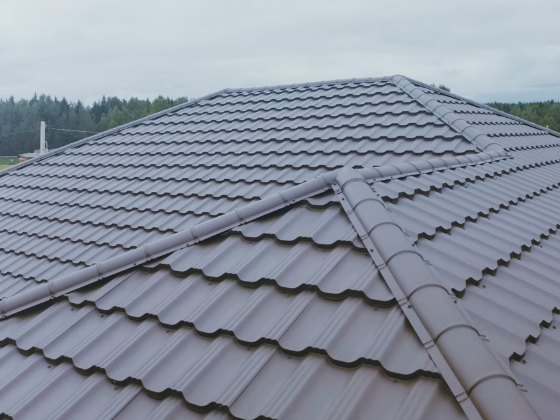
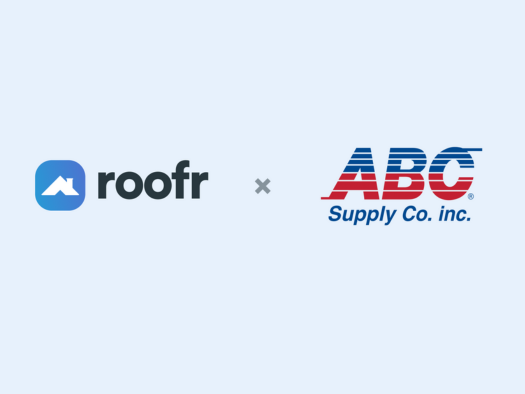



.avif)





.png)

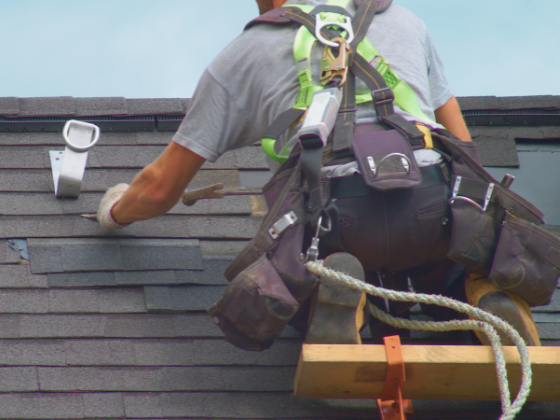



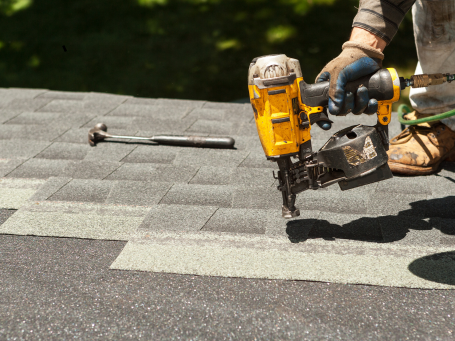



.png)



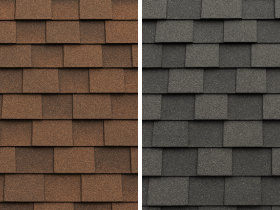

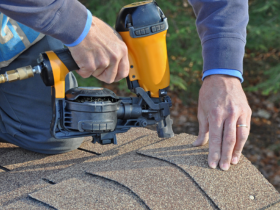






.png)















.avif)
.avif)

.avif)


.avif)


.avif)

.avif)




.avif)
.avif)

.avif)



.avif)
.avif)


.avif)
.avif)

.avif)
.avif)


.avif)




.avif)
.avif)

.avif)

.avif)


.avif)